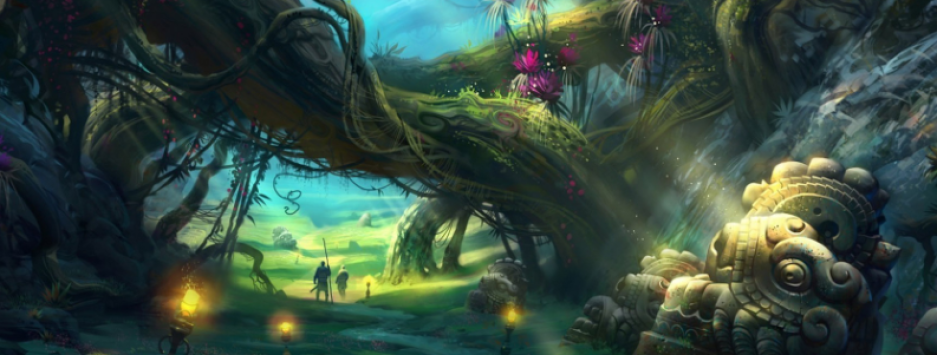And we’re back for another Monstrous Monday! I’m on a role! As promised, today we’re going to be taking a look at the cockatrice, a creature that is as deadly and evil as the basilisk we took a look at last week. For the sake of separating these two critters, I will be doing a fair bit of comparing today, especially because at one point, they apparently did become synonymous and there’s an actual PBS episode that defines them as being one and the same creature, even today. Feel free to follow the link here if you want to check that out. Even the Encyclopedia Britannica thinks they’re one and the same… I found an explanation from one site that gave a reason for the split: “Whether these are two distinct creatures or whether they’re interchangeable names for the same thing is something of a Cyclic Trope. Originally (i.e., in the Roman Empire and the early Middle Ages), the basilisk was depicted as a horribly venomous snake, while the cockatrice, which first shows up in medieval England, was a chicken-reptile chimera that turned people to stone with its gaze. Eventually, the two creatures blended into a single myth for a number of reasons, and became synonymous terms for a single monster.” From TV Tropes of all places. Anyway, on to the topic at hand: the cockatrice.
Last week we looked at three different forms for the basilisk. If we’re considering them to be different creatures, which, for the sake of this post and my own personal preference, we are, the basilisk is more commonly aligned with snakelike or lizard-like features and very rarely has wings. The cockatrice, on the other hand, is more like the chimera creature we saw with wings. On one of the sites I looked at, it is described as a “dragon with birdlike features.” Can you guess which I prefer? XD


Historically speaking, it first appeared sometime in the 12th century. “The Oxford English Dictionary gives a derivation from Old French cocatris, from medieval Latin calcatrix, a translation of the Greek ichneumon, meaning tracker.” From the Villains Wiki. Similar to the basilisk, the cockatrice is born / created through unconventional means as well. Whereas the basilisk comes from a snake or toad egg that is incubated by a cockerel, the cockatrice is born / created from the egg of a rooster or a chicken and incubated by a snake. Also similarly, they both have comparable powers, at least insofar as the stone or death gaze is concerned. In video games, the basilisk is generally given petrification powers whereas the cockatrice may have petrification and / or instant death. I hate fighting cockatrices in games… haha
Unlike the basilisk though, the cockatrice doesn’t seem to have the same weaknesses. Or rather, none are actually mentioned. Between the two, the basilisk seems to be the more destructive creature since it can obliterate entire swathes of land and areas with its venom, but both are generally inimical to life. They are indiscriminate killers and are viewed, by and large, as utterly evil creatures. They are also equally difficult to get rid of since they can both kill you by just looking at you, not to mention the fact they have other more base weapons at their disposal.
Oh! I just found a neat tidbit on the Wikipedia page: “This legend has a possible Egyptian folk root; the eggs of the ibis were regularly destroyed for fear that the venom of the snakes they consumed would cause a hybrid snake-bird to hatch.” The basilisk is said to potentially be inspired by the cobra and it looks like the idea or hatching of a cockatrice could come from the fact that Ibis birds regularly eat venomous snakes. Neato! Now, last week I also wondered how the size disparity between a weasel and the basilisk would work but this is also largely because my association with both creatures tends to come from a video game perspective where small beasties are not usually that intimidating. Most of the cockatrice and basilisk monsters you encounter in combat are man sized or larger (sometimes much larger). In reality, since the creatures are coming from relatively small animals themselves, they were likely not that large at all. One reference I found indicated the cockatrice in the Forgotten Realms is only about 25lbs (11 kgs) and about the size of a large turkey or goose. I don’t imagine the basilisk would be that different either, which makes the weasel a much more formidable opponent in the end.
Given what we’ve learned today (myself included), I’m actually more inclined to see if I can work them into a story or idea at some point. I’ve got the inklings of an anthropomorphized short series that I wouldn’t mind attempting to throw one or both of these into, just for kicks. heh In the meantime though, I hope you had fun reading / listening along and maybe you will be looking forward to the next posting! Not sure what I’m aiming for but I’ll think of something. Unless you’d like to make a request that is! Feel free! Questions are also welcome. And on that note, thank you for stopping by and I hope to see you next time!

